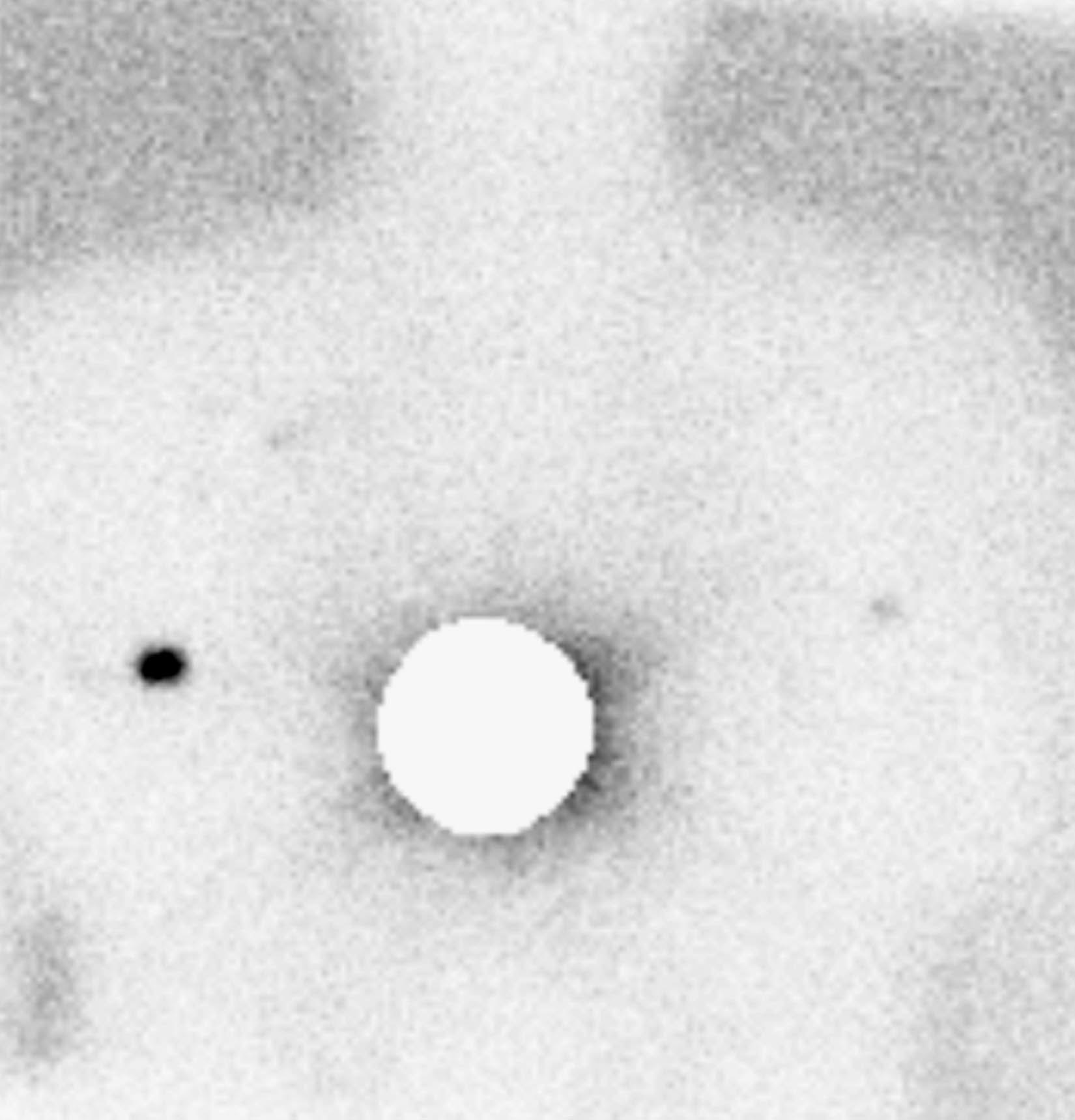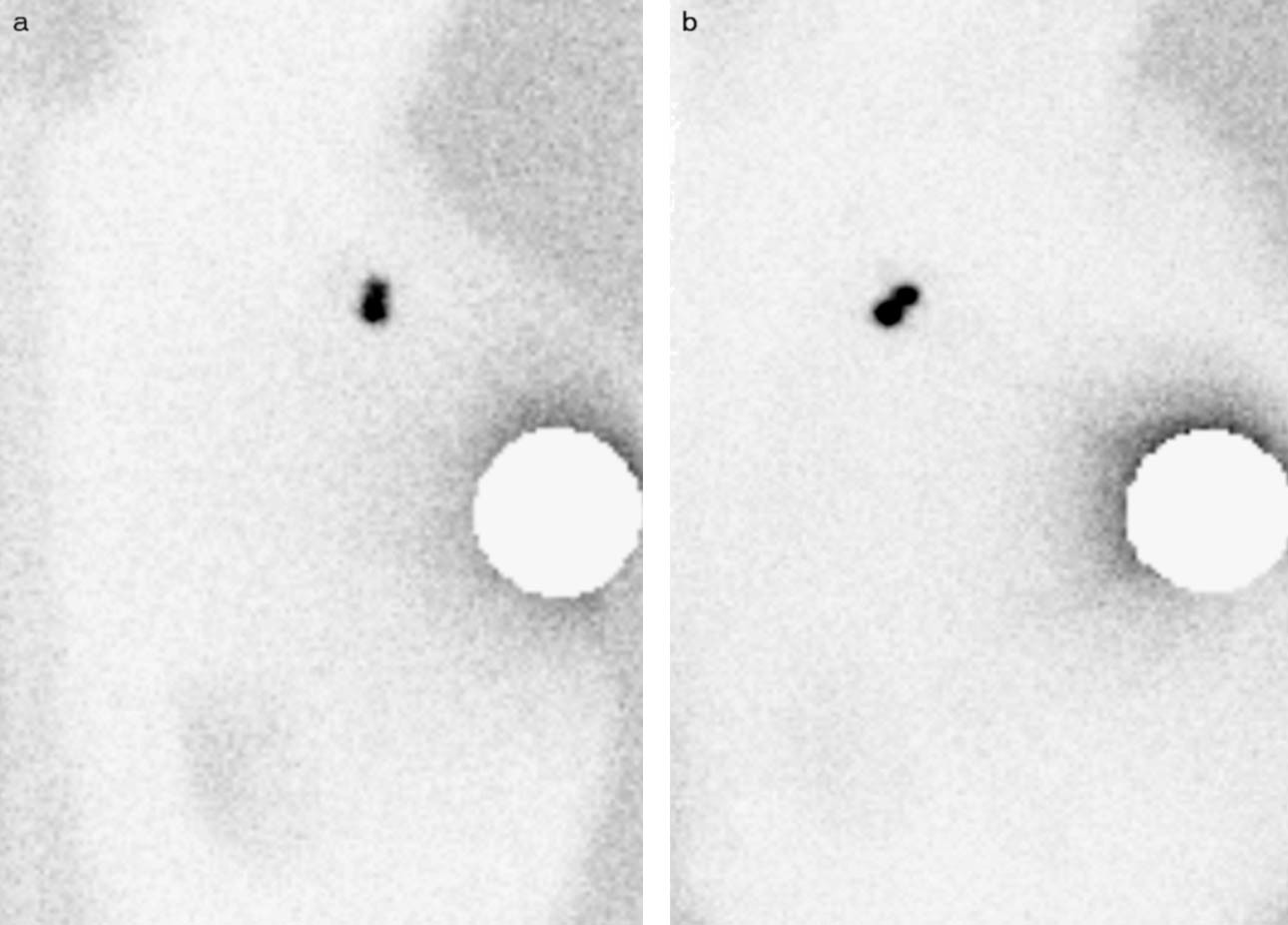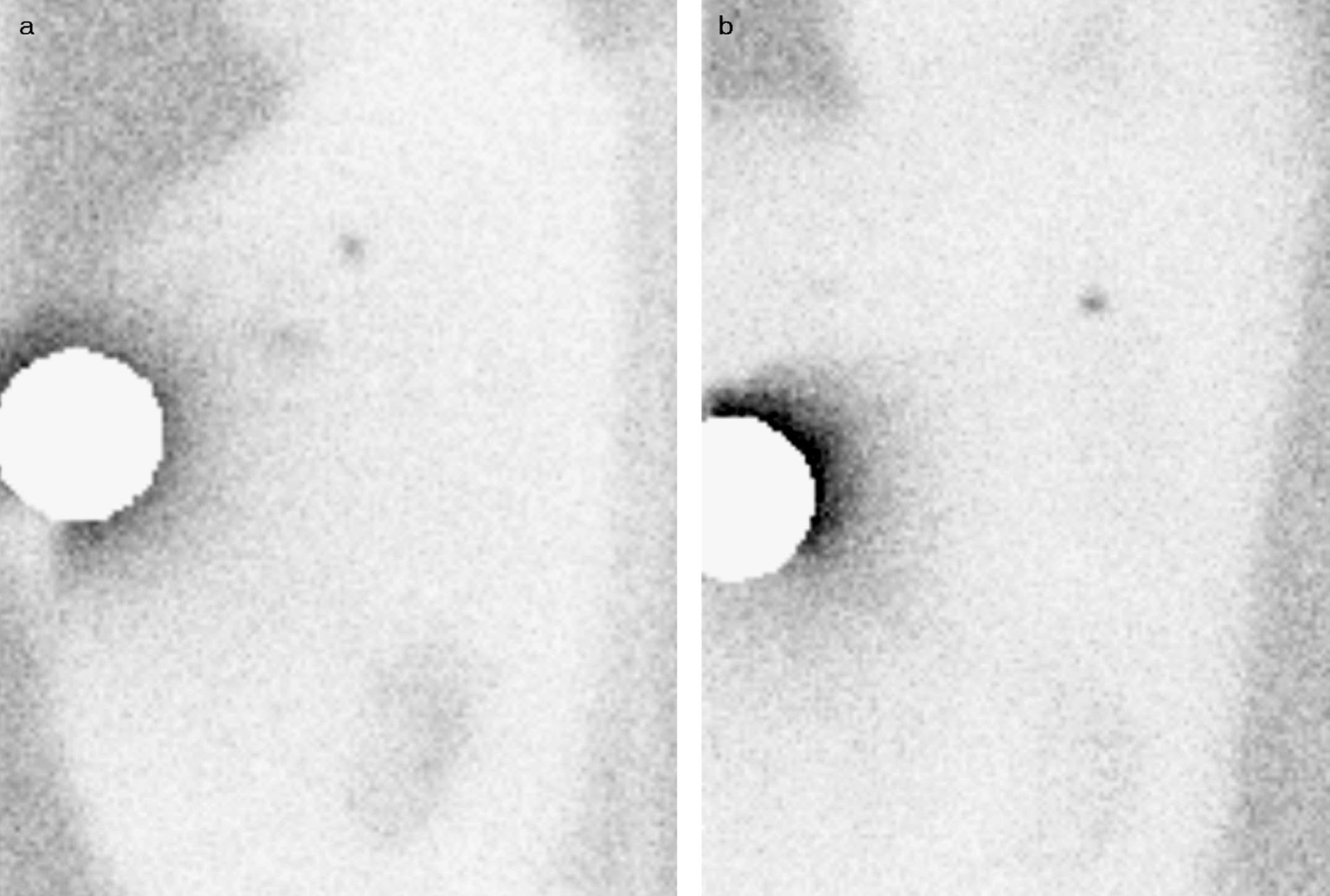La medicina nuclear, aplicada a la detección de ganglios centinela en los tumores primarios mamarios, es de gran utilidad para conocer el drenaje linfático regional de la mama afecta, principalmente su variabilidad individual anatómica y/o tumoral, para determinar el estadio tumoral inicial.
Presentamos el caso de un carcinoma ductal infiltrante mamario (T2), en la unión de cuadrantes internos de mama derecha estudiado por linfogammagrafía y sonda gammadetectora. Se reconocieron 3 ganglios centinelas, 2 axilares homolaterales, y uno axilar contralateral, no metastásicos.
El hallazgo linfogammagráfico del ganglio centinela axilar, contralateral a la mama afecta, demuestra la variabilidad anatómica individual en el drenaje mamario, remarca la importancia de la medicina nuclear en su detección, generando nuevos planteamientos pronósticos con repercusión en las medidas terapéuticas y en el seguimiento de los pacientes.
The role of nuclear medicine in the detection of sentinel lymph nodes (SLNs) in primary breast cancer is very useful to determine regional lymphatic drainage from the affected breast, mainly its anatomical and/or tumoral individual variability and to determine the initial tumor stage.
We present the case of an infiltrating ductal carcinoma of the breast (T2) in the junction of the inner quadrants of the right breast studied by lymphoscintigraphy and gamma probe detection. Three non-metastatic sentinel lymph nodes were found with the selective lymphadenectomy: two in the ipsilateral axilla and one in the contralateral axilla.
The lymphoscintigraphic finding of the axillary sentinel lymph node contralateral to the affected breast demonstrates the individual anatomical variability in mammary drainage. It emphasizes the importance of nuclear medicine imaging techniques in its detection and generates new prognostic approaches with impact on therapeutic measuresand patient follow-up.
Artículo
Comprando el artículo el PDF del mismo podrá ser descargado
Precio 19,34 €
Comprar ahora









